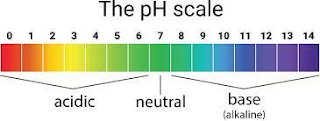Show: Find The 'Poison'
Hi everyone! Today we are going to have fun with poison!
It all starts with some sodium bicarbonate. Sodium bicarbonate is a harmless chemical found in baking soda and is what makes cakes rise. When sodium bicarbonate mixes with some water, it doesn't do anything. Only the effect with universal indicator paper is different.
Now another thing we need is some citric acid. Again citric acid is another harmless chemical found in citrus fruit.
Both of these aren't real poison, but if we mixed real poison, that would be too dangerous for kids.
When Sodium Bicarbonate is mixed with indicator paper, it turns into a greeny/ bluish colour. This means it is alkaline, which is from colour no. 8-14.
But when Citric acid is mixed with indicator paper, it turns into a reddish/ yellowish/ greenish colour. This means it it acidic, which is from colour no. 1-6.
However, when water touches indicator paper, it turns into a lightish green colour. This indicates Neutral, which is about no. 7.
This experiment is very interesting because you can discover some new ways to know which poison is which. I learnt from the experiment that the pH scale and indicator paper that you can measure how strong acidic or alkaline it is.
This is the video to my experiment:
How to make the Poison experiment:
You will need:
-3 sample tubes
-Universal indicator paper
-Citric acid
-Sodium bicarbonate
-Water
-Gloves/ Tweezers
Cut the indicator paper while holding on with gloves/ tweezers. Do not use hands, microbes on human skin can effect the paper.
Instructions:
1. Add half a tablespoon of citric acid to one sample tube, half a tablespoon of sodium bicarb to another.
2. Leave the third tube empty.
3. Three quarters fill all the tubes with water.
4. Shake all the tubes with the lids on, until all the crystals have disappeared.
5. Get 3 pieces of indicator paper out, and dip each in the tube, and pull out immediately. Wait 10 seconds to let the colour to develop.



Nice Work!
ReplyDelete